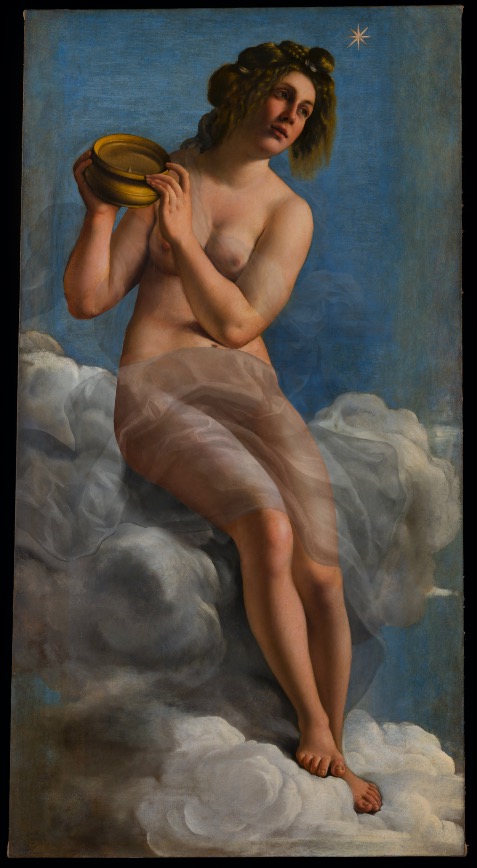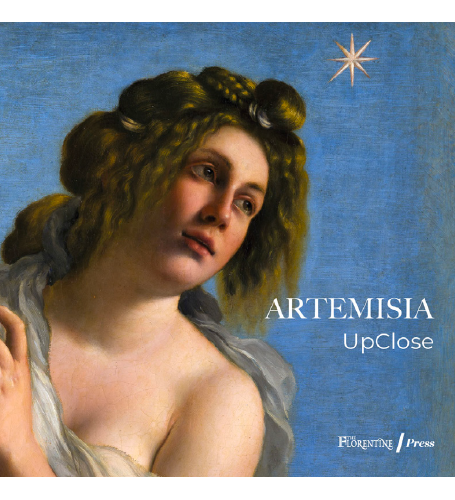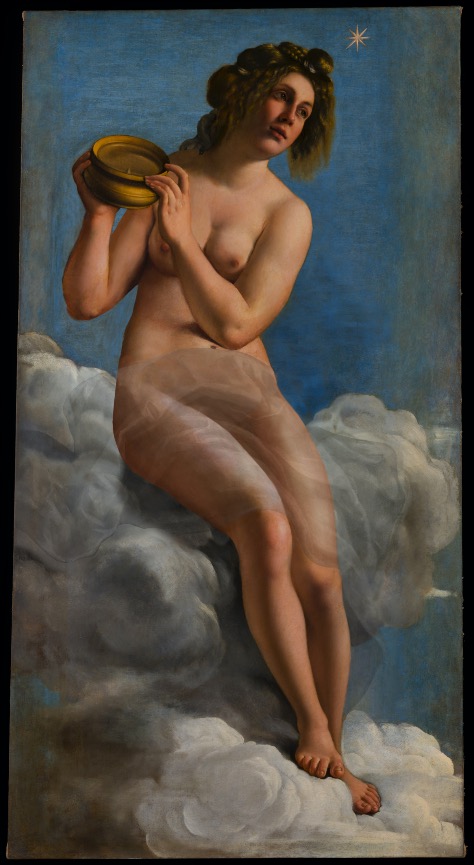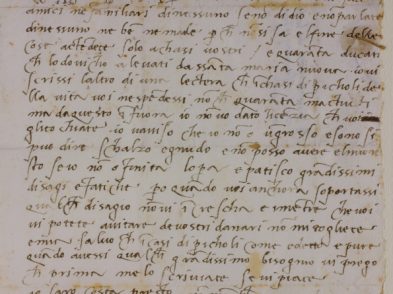In a number of Florentine museums, artworks are hung in what Italians call a quaderia style to emphasize that many of these places were homes before they became museums, and that each of their owners—Medicis and Lorraines alike—had their own pet paintings. Depending on each ruler’s preferences, some pictures were hauled off to hunting villas and others were hung at neck-craning heights, in places that prove the “collection” is what counted, not the power of an individual piece. Yet, sometimes, I can’t help feeling that one’s dialogue with art must be on a “you-and-me” basis—up-close and very personal, close enough to treat the painting as you would a person. Close enough to ask it questions and to find its answers inside yourself.
You can keep this in mind when you go to Artemisia in the Museum of Michelangelo, the exhibition on show at Casa Buonarroti now until January 8 because the Uffizi Galleries’ Penitent Mary Magdalene, dressed in a shade of gold that’s fit for going to heaven, is waiting there for visitors, at eye level. Normally exhibited at the Pitti Palace, in a spot too high to see, she is now staring right at you. Newly restored, she has been breath-taking for centuries. Is her face that of Artemisia idealised, or does the saint somehow represent Maria Maddalena of Austria, the grand-duke’s wife? The only thing to do is ask her, since she is finally close enough to tell her secrets properly.

While at the show, if you can tear yourself away from the Magdalene and move into the middle room, you’ll come upon the real lady of the hour because, unbelievably, there’s another. I’m referring to the Allegory of Inclination, which Artemisia painted as a nude when she was not yet 22. It was shortly after her arrival in Florence, where she moved once married, following an introductory letter her father penned to Christina of Lorraine, the grand duke’s mother. The Inclination tributes Michelangelo’s impulse to create. What you’ll see as you stand before her is how Artemisia didn’t waste her lapis lazuli pigment, which, at the time, was more costly than gold. She was stingy with it along the edges, as she knew that part of the painting would be covered by the ceiling frame in the Gallery room, where the canvas has hung belly-down for centuries.
Those with eyes far better than mine will see Artemisia’s fingerprint, near the Allegory’s left calf, and even those without eagle vision will notice the young woman’s belly button, not visible prior to the painting’s restoration, which was part of a wider project at Casa Buonarroti called Artemisia UpClose, sponsored by Calliope Arts and Christian Levett, whose crowning achievement is the exhibition itself, although the state-of-the-art relighting of the Galleria is no less important.

Artemisia UpClose
Choose between PDF Digital edition or Paper copy delivered to your home – FREE SHIPPING IN ITALY ONLY.
A day in the life of Artemisia… today
Artemisia Gentileschi’s Allegory of Inclination (1616) tributes the genius of Michelangelo, gives a nod to Galileo, and bears a striking resemblance to Artemisia herself. During its conservation at Casa Buonarroti, the canvas was removed from its ceiling heights, and placed at eye-level in the Florentine home-museum where Artemisia worked while five months pregnant, receiving a salary three times that of her male counterparts, and earning the esteem of her patron, Michelangelo the Younger. Artemisia UpClose documents this once-in-a-lifetime encounter and celebrates a project that encompasses research, restoration and an exhibition, in which world-renowned curators, conservators, philanthropists, art historians, restoration scientists and the art-loving public come together to discover the untold mysteries of an extraordinary artist and her censored artwork, painted over with draping not long after its creation, now unveiled – virtually – for the world.
The Allegory of Inclination is a censored painting. The drapery that has been covering the figure’s body since about 70 years after its creation was ordered by Leonardo Buonarroti. He wanted to protect the innocence of this wife and children, Il Volterrano was told, before being tasked with a “cover-up commission”, which resulted in a layer of paint so closely melded with the original that it is impossible to remove, physically at least. The figure’s virtual unveiling, which is 100 per cent science-based and fully respectful of each episode of the painting’s history, is explained in the video in exhibition room 3. X-rays, reflectography, raking light: it took 32 layers to get to the crux of the question of how and what did Artemisia paint exactly?

Ph. Massimo Chimenti and Culturanuova, Ottaviano Caruso
As coordinator of Artemisia UpClose, I have had the privilege to witness the entire process, with a bird’s-eye view, for the better part of two years, but even more exciting to me is that now the public can too, over the course of their lunch hour. As you look, see and recognise the beauty and, yes, even the glory of Artemisia UpClose, spend a few minutes with her displayed documents too, from payments to personal letters, and when that’s through, give a thought to her friends Galileo, Michelangelo the Younger and the Grand Duke Cosimo, also featured in the show. Yet, most of all, give a thought to the 30-something technicians, scientists, art historians, conservators, curators and philanthropists who brought this jewel of a project to fruition, for Artemisia, and for the many friends she has and has yet to make, today.
Artemisia in the Museum of Michelangelo
Curated by Alessandro Cecchi
Casa Buonarroti, via Ghibellina 70
Until January 8, 2023
10am to 4.40pm; closed Tuesdays







